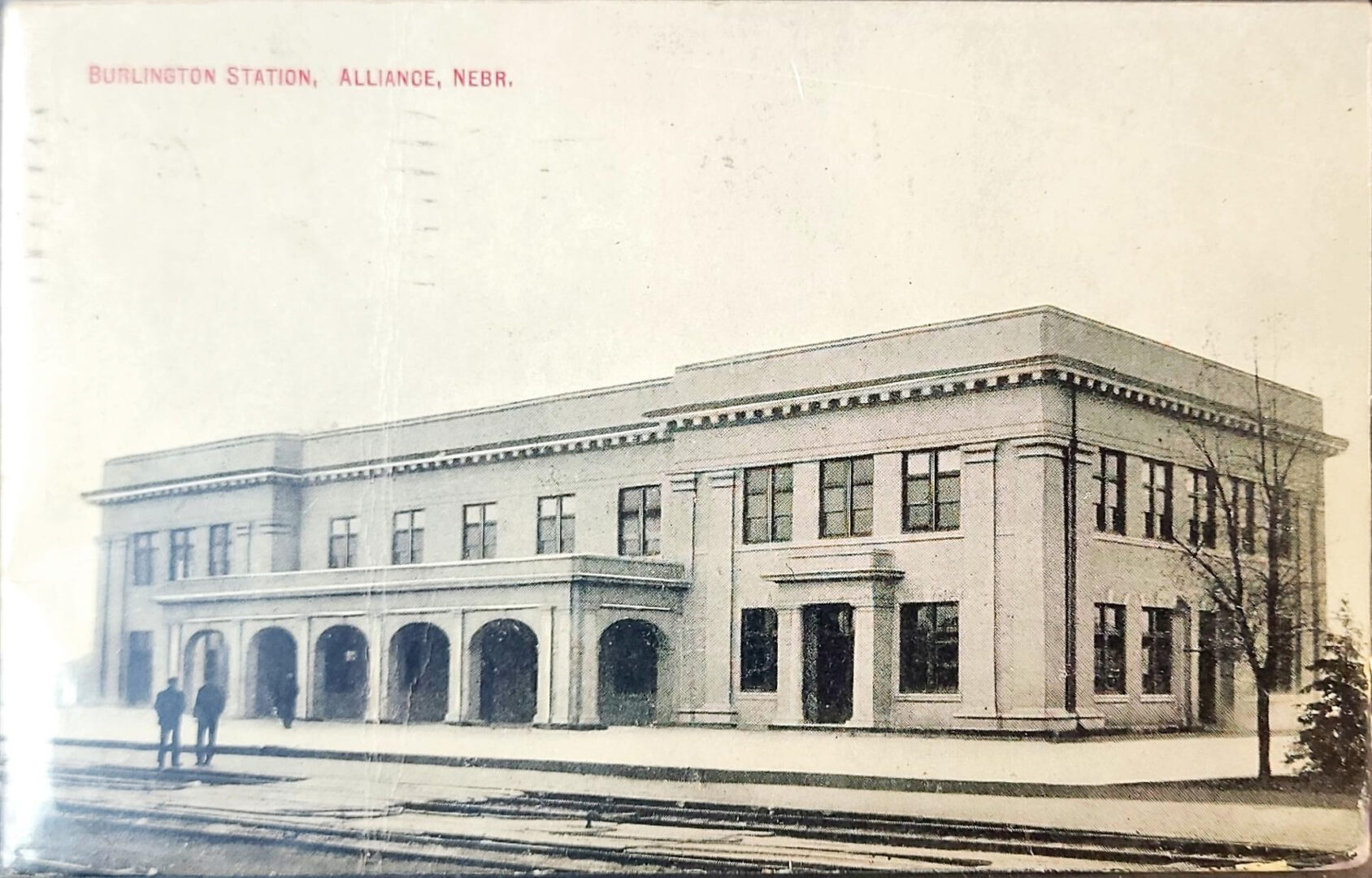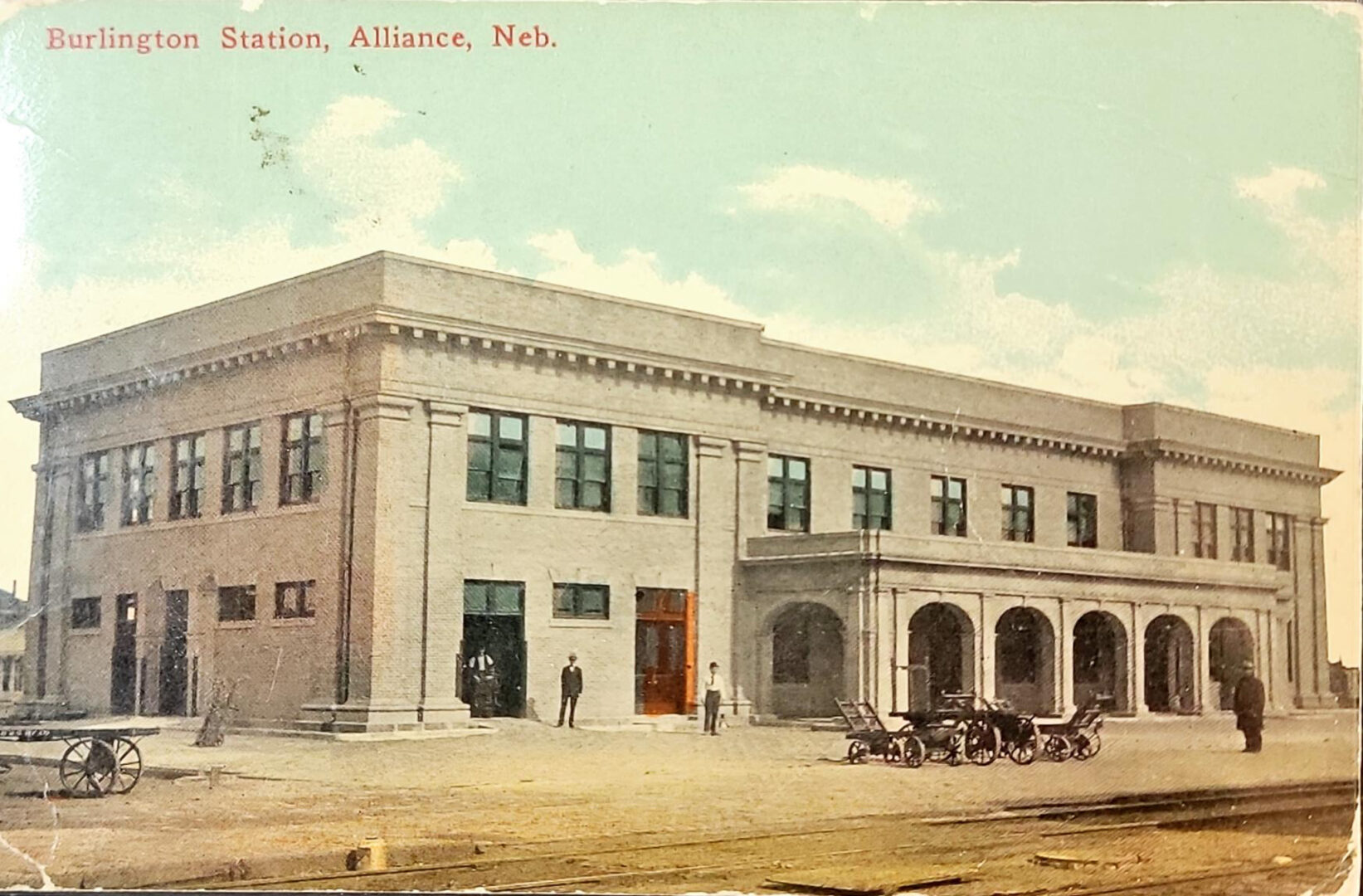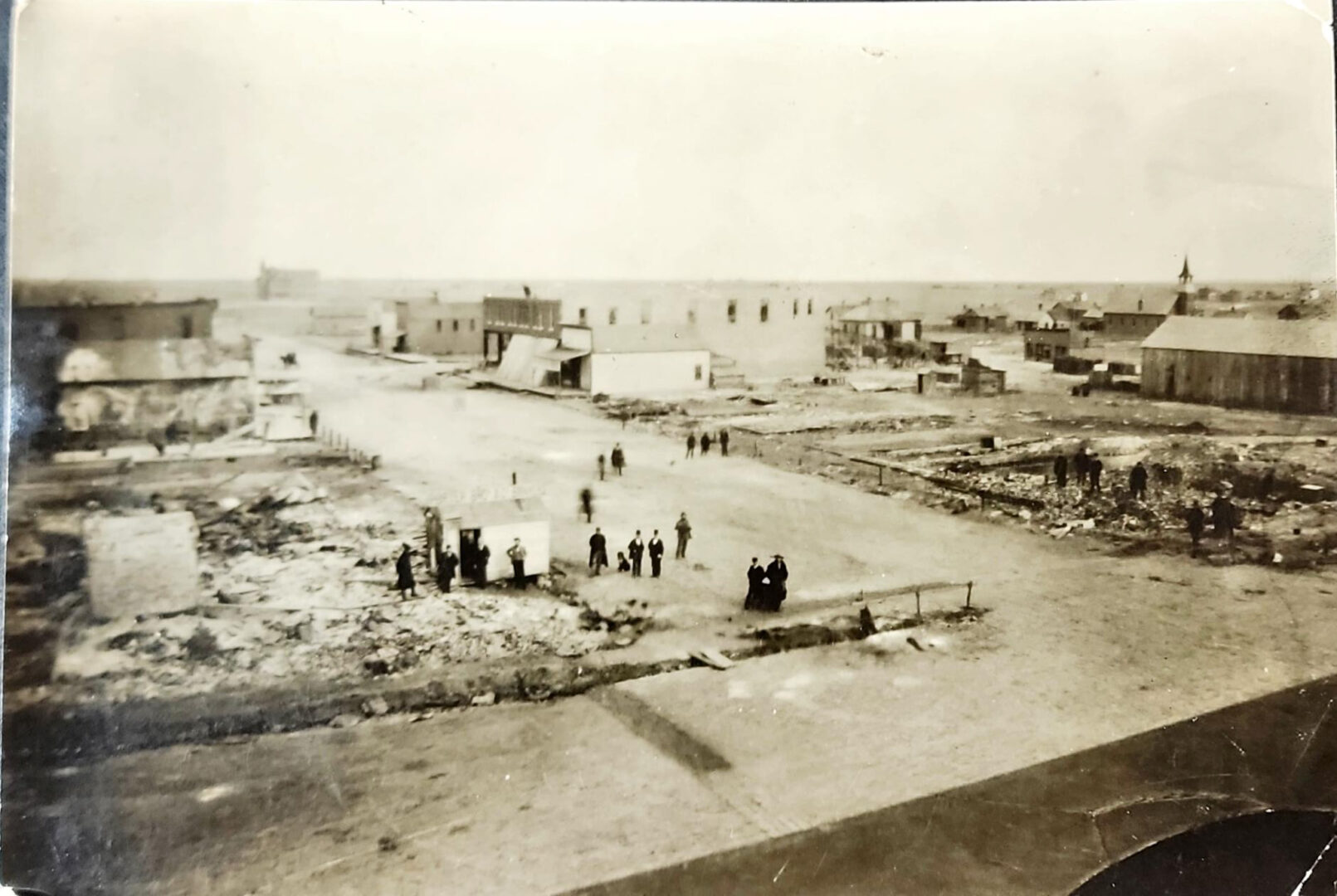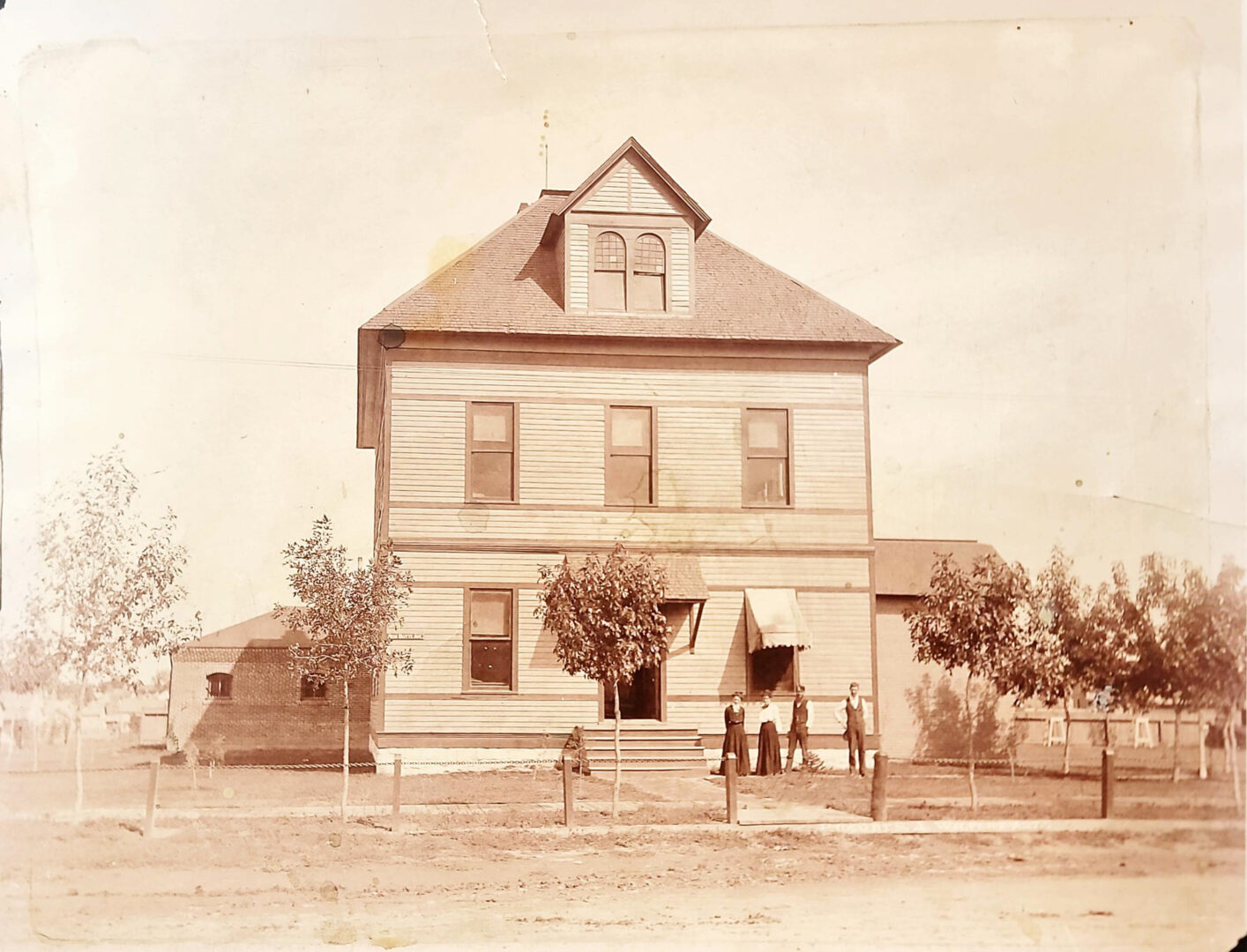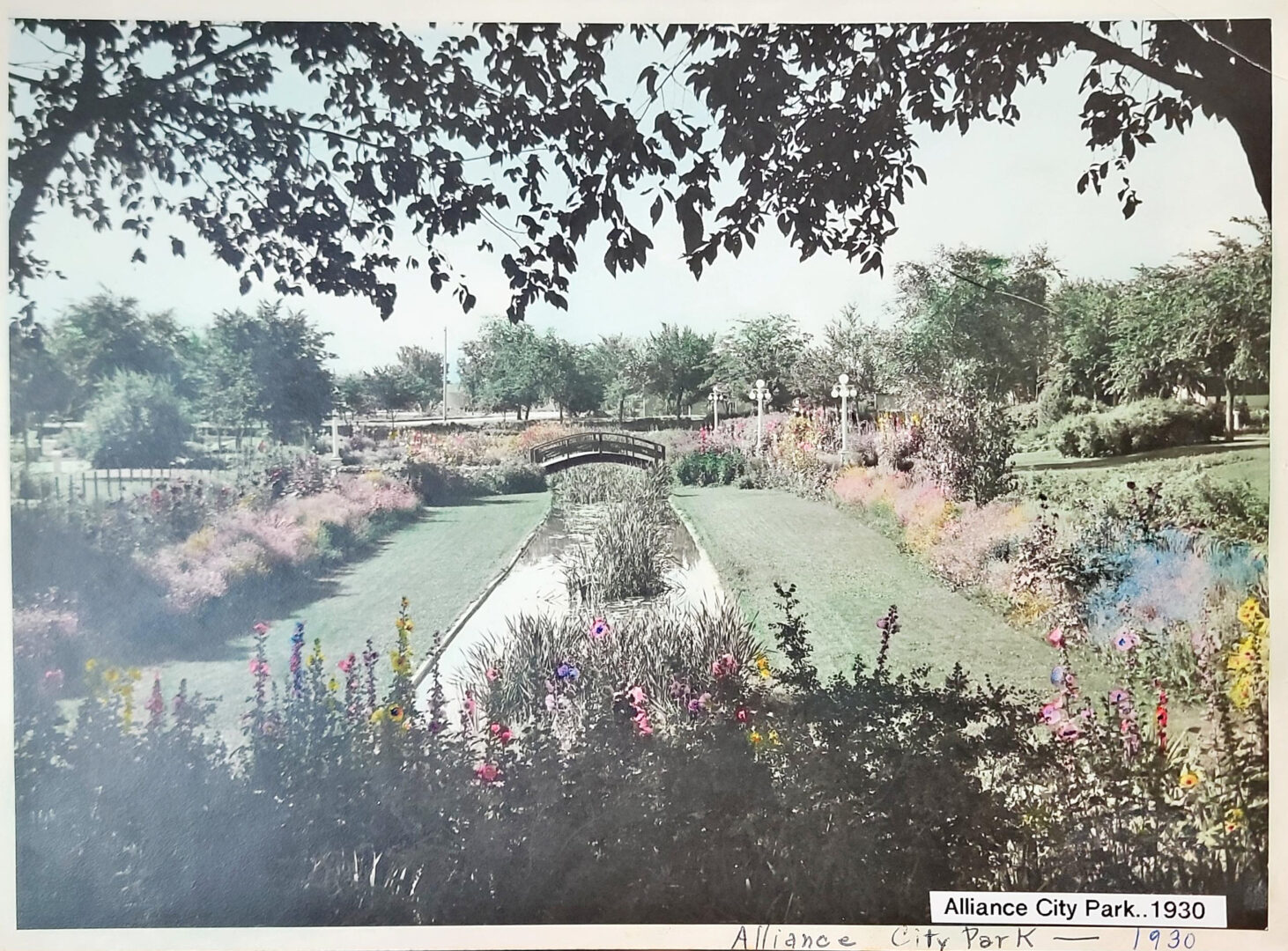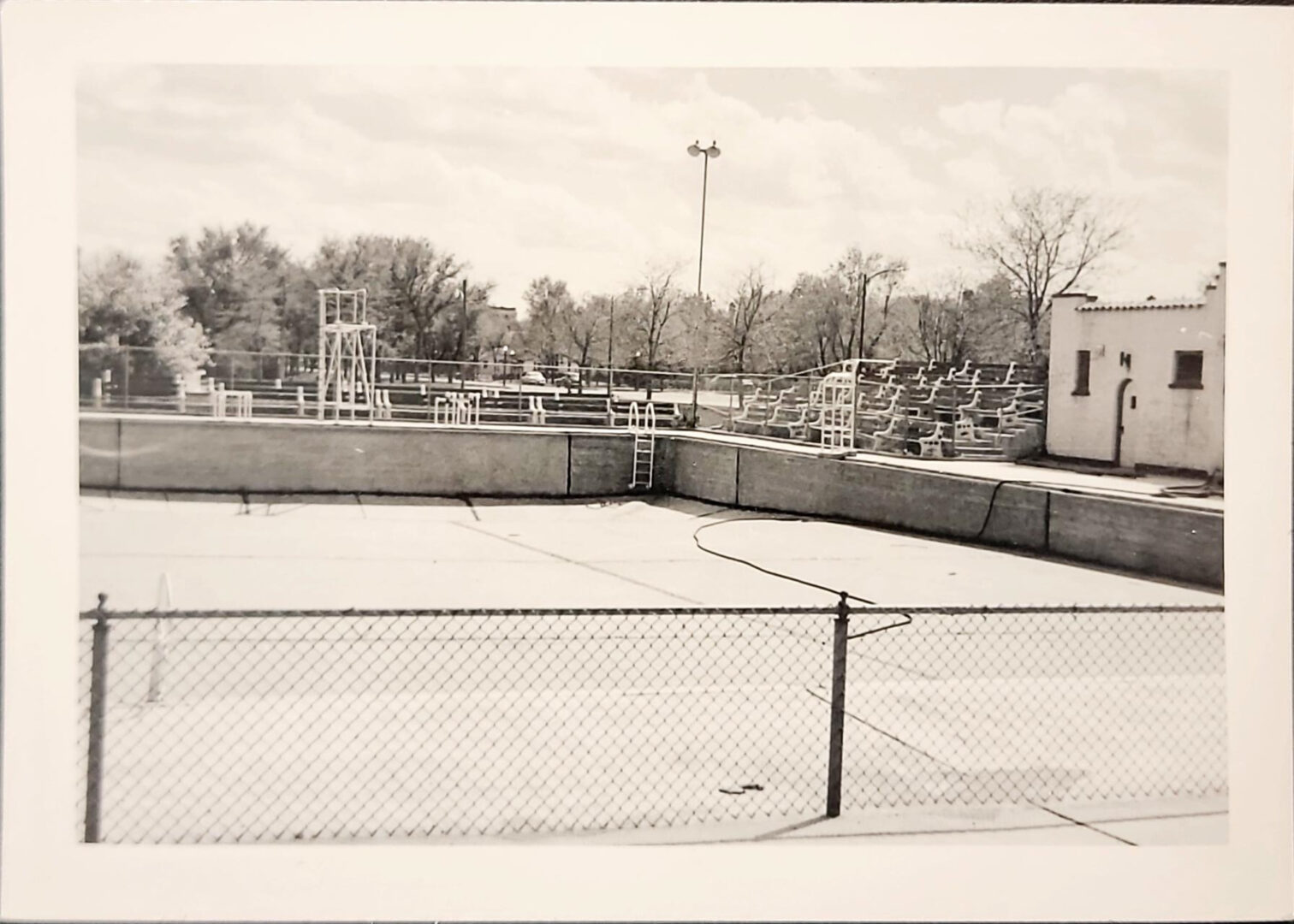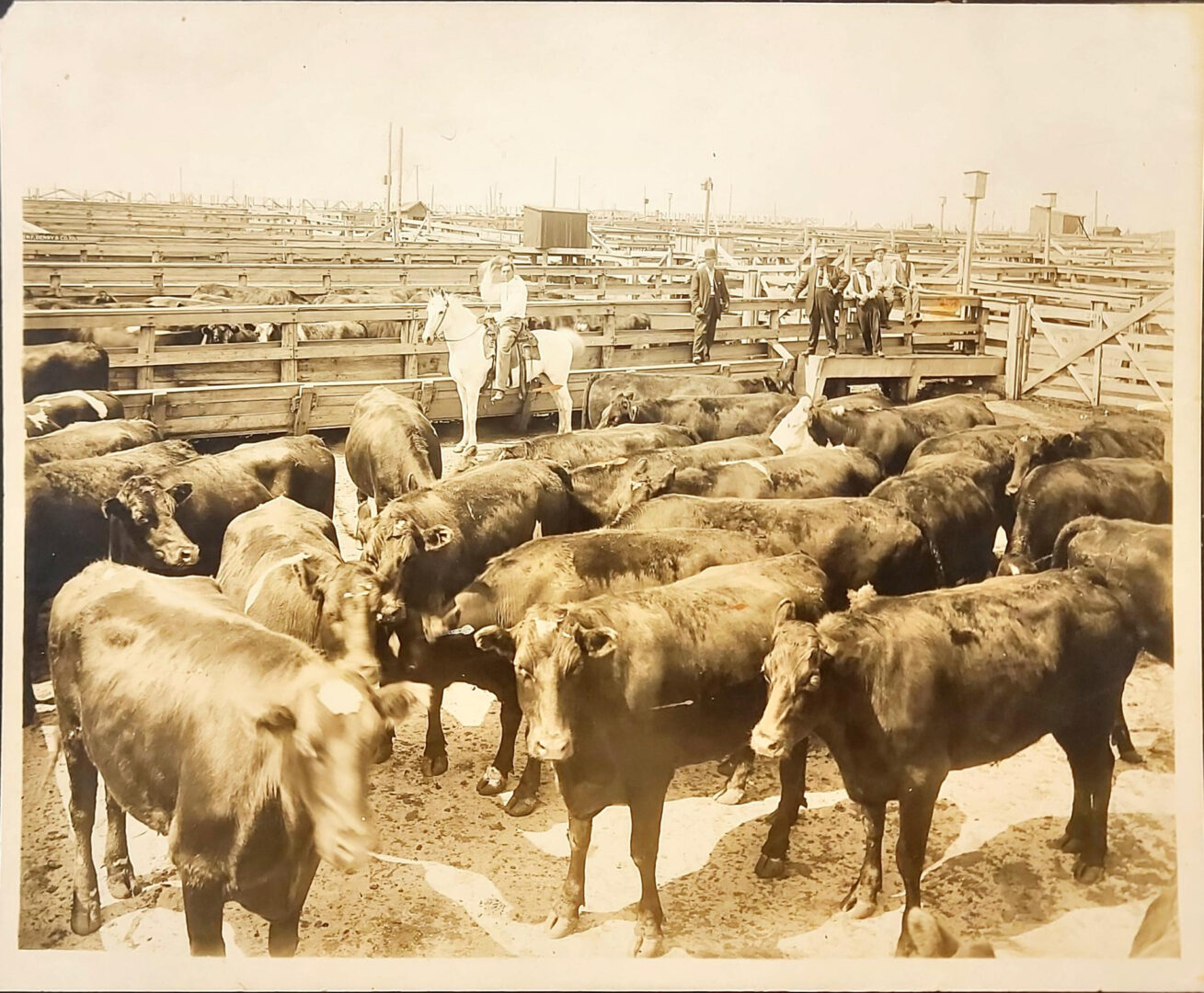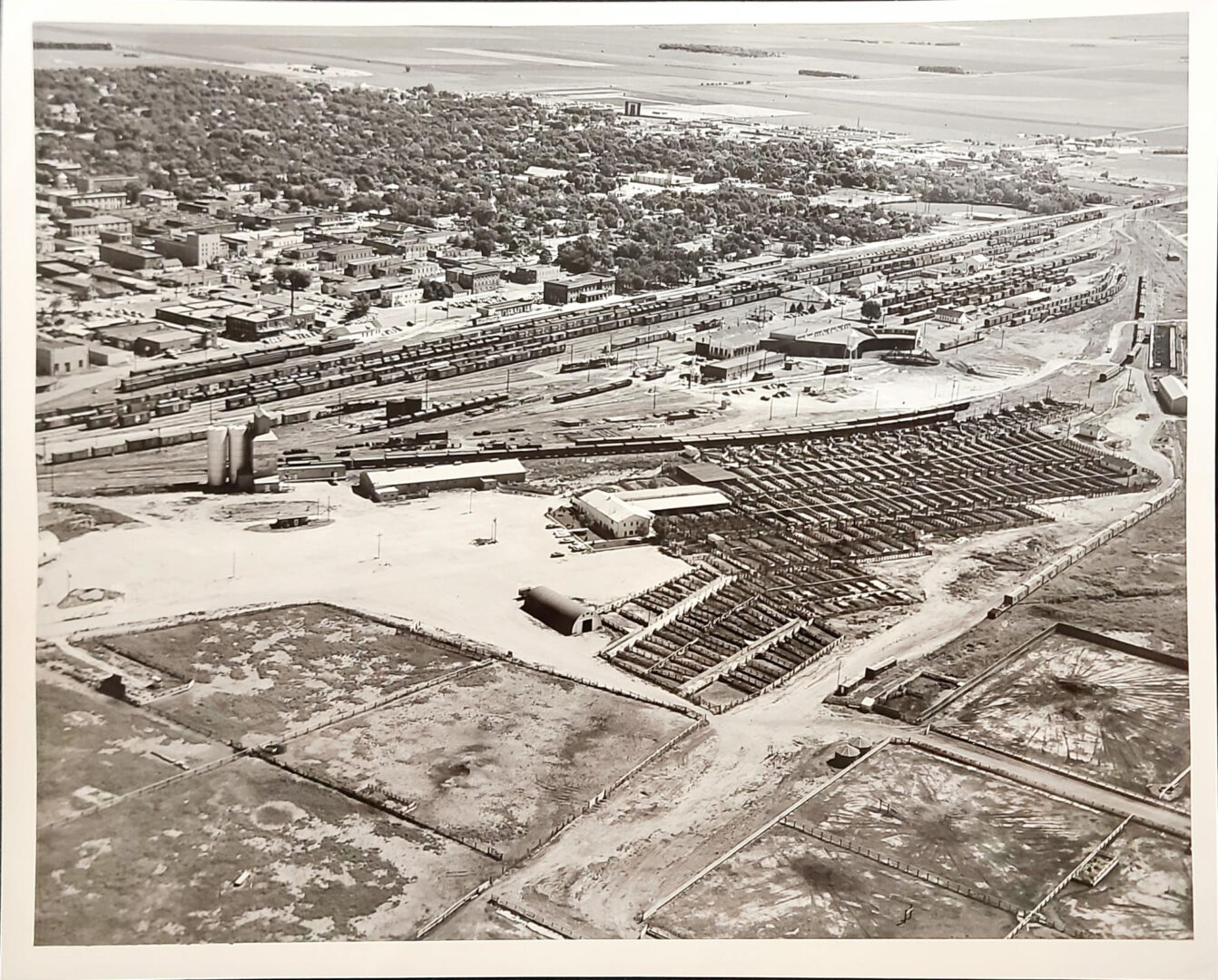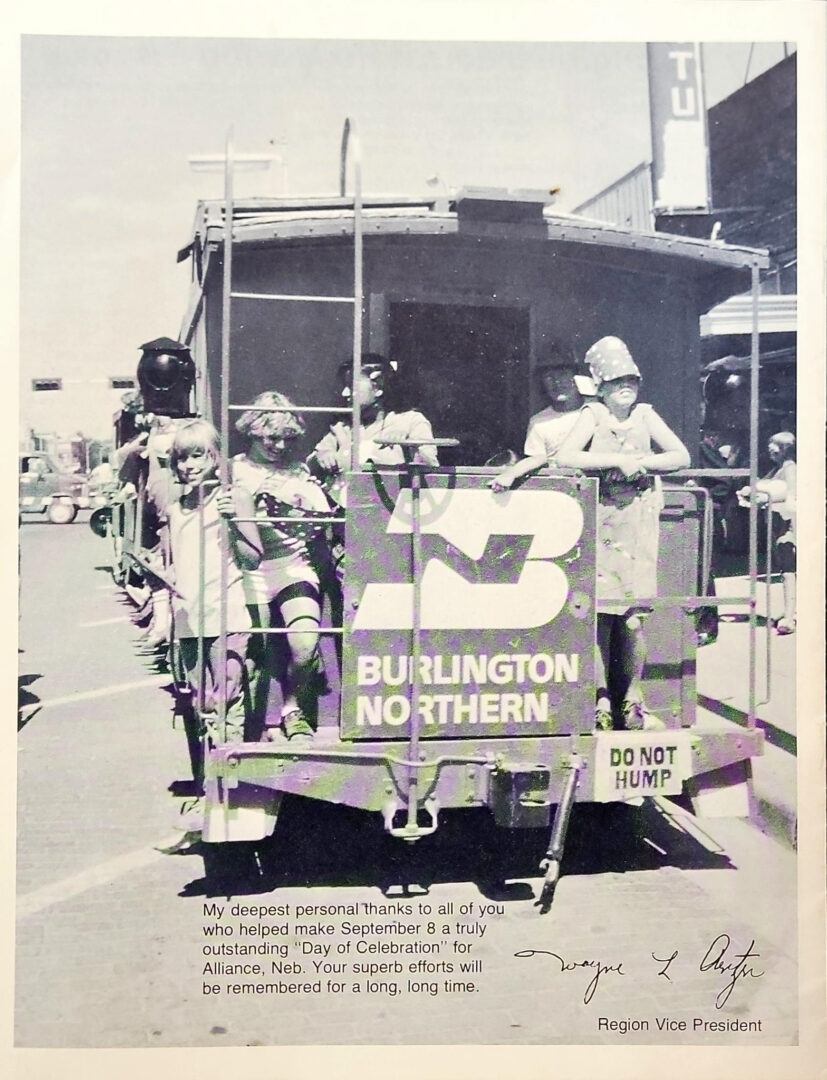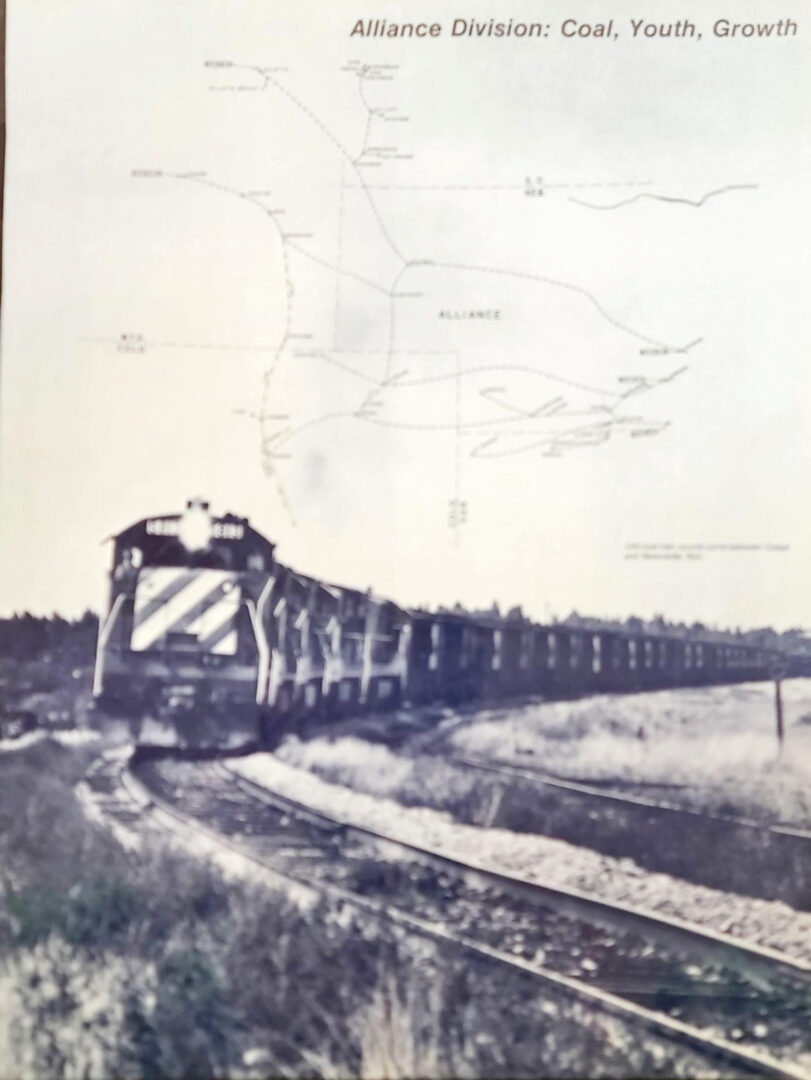Our Mission
The Alliance Chamber of Commerce exists to provide leadership, promotion, and service for our members and the community as a whole.
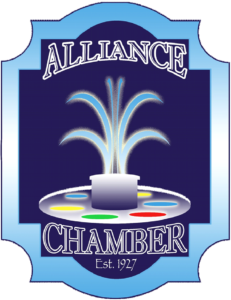
Board of Directors Meet the team that makes it happen!
Committee Information Committees are the lifeline of the Chamber.
It is through the Chamber committees and volunteers that the Chamber is able to enact change and is able to help businesses and the community at large. All of the Chamber committees are open to any employee of any Chamber member. The meetings are always open to new members.
You can read more about each committee here. For more information on any of the committees, contact the Chamber staff. If you’re interested in volunteering for a committee, fill out our contact form.
The Ag Committee organize annual Farmer/Rancher Golf and Pitch Tournaments, travel to various agriculture related businesses in the region and provide educational and marketing seminars for local providers. Ag Committee meets the first Monday of February, April, June, August, October and December.
Ambassadors represent the Chamber at Ribbon Cuttings, Business After Hours, Open Houses, Spotlight Member Banner Deliveries and Visitations. They also volunteer at community events such as the Easter Egg Hunt, Big Blue BBQ, Heritage Days, Sunday in the Park, and Operation Thank You.
Ambassadors meet the last Wednesday of each month. During these meetings they visit area businesses to learn what services are provided. Members may also use their time to introduce themselves and share a little about their own business or organization.
The Cattle Capital Rodeo Committee is organized exclusively for charitable and educational purposes, more specifically to promote the sport of rodeo.
The mission statement is: To plan and organize a community-wide celebration, Heritage Days, to help benefit retailers, gas stations, hotels, restaurants and any other businesses, and give the people of the community the chance to celebrate our Heritage.
A nine month training program to help develop the skills for future leaders in our county. The chamber also encourages people to participate in the class to learn about our area as well as form personal networks for future business and community endeavors.
Our History The History of Alliance
The City of Alliance is located in the center of the Nebraska Panhandle. Bordered on the south and east by the sandhills prairie it was dubbed “An Oasis in the Sandhills”. The City was founded March 28, 1888 and soon became a leading railroad and business center.
Alliance was founded after the creation of Box Butte County from the division of Dawes County. The name Box Butte was elected after the prominent sandhill in the northeast section of the newly formed county.
The origins of the name of Alliance can not be as easily determined. The most often accepted story alleges that the source was a J.N. Paul. Mr. Paul was an early Engineer with the Burlington and Missouri River Railroad and suggested the name Alliance after his hometown of Alliance, Ohio.
The Burlington and Missouri River Railroad played an important role in the settlement of Northwestern Nebraska. Encouraged by Congress, railroads were finding that to be profitable, settlement was necessary. Advertisements in the East and overseas were part of the strategy to encourage settlers into the new country. Free land and individual freedoms were too much for the average European to ignore. By 1900, the population of Western Nebraska was over 10% from foreign countries.
Many of the original settlers of Alliance, Box Butte County and Western Nebraska were settlers from other areas of the United States. Veterans of the Civil War were given special consideration for homesteads. For honorably serving their country in war, they were allowed to take 160 acres of virgin country for their own. Many of Alliance’s first settlers were from Illinois and Iowa where too many people drove early pioneers West in search of fewer people, better land, and greater opportunities.
In June of 1887, agents of the Lincoln Land Company, a subsidiary of the Burlington and Missouri River Railroad bought most of the school section where Alliance was later built. Part of the land was designated for use by the railroad for right-of-way, shops, and a roundhouse. But no other sale of land was made while the wait for the rail continued.
The small town of Grand Lake, mostly tents and a few small frame buildings grew up east of what would become Alliance. On February 25, 1888, public sale of lots around those already purchased by the Lincoln Land Company for railroad purposes, took place. Plots in the newly formed town quickly sold. People began flooding in by train and wagon.
The schools and churches started in Grand Lake were continued in Alliance and were joined by more. One of the areas worst problems was created with the need for teachers. The school board soon discovered any young female was quickly married. For a time, school boards even publicized in Eastern newspapers for young women of plain and homely countenance to come West and teach. But even the less beautiful married quickly. Frustrated school boards then hit upon another solution. Contracts often included a clause preventing a teacher from marrying for two years. For its time, a restrictive but necessary clause.
Early churches in Alliance included the Catholic, Presbyterian, and Methodist faiths. Church buildings were built as soon as possible. For smaller denominations, the backs of store buildings sufficed until a church could be completed.
The town grew rapidly. The census of 1890, only two years after the founding of Alliance gave the town a population of 840. By 1896, the population had more than doubled to 2,200 an increase of 1,360. It would be almost 100 years later before Alliance would increase the population proportionally as much.
One of the first groups formed in Alliance was the Volunteer Fire Department. In less than one year, three fires gutted the business districts along Third Street and Box Butte Avenue. The first started in the meat market of C. Shelter at First Street and Box Butte Avenue. A total of nine buildings were lost.
The second fire on January 11, 1893 started in the stable of a furniture store and spread due to a strong wind. The third fire started in the G.L.E. Klingbeil building on July 3, 1893. Five buildings received damage from this fire. In a special election held on May 31, 1893, a majority vote was made for a bond issue to construct a water system. Major reasons given for the need included the fires along Box Butte Avenue. A city ordinance was also passed requiring construction of new buildings be of fireproof materials. For the first few buildings, the brick was brought into Alliance by rail but soon two brick yards were established in Alliance.
Alliance became a center for homesteaders and ranchers needing materials and shipping crops and cattle to Omaha and other markets. The Nebraska Stockgrowers Association began in Alliance in 1889 as a way to combat a major problem with cattle rustling.
In a long fight covering three different elections and numerous court appearances, the Box Butte County Courthouse was transported by rail from Hemingford to Alliance through the engineering skills of E.W. Bell, a bridge foreman with the Chicago, Burlington, and Quincy (C.B. & Q.) Railroad. This feat started on June 21, 1899 with preparation of the building and continued until July 5, 1899 with the placement of the Courthouse on the lot north of 5th Street and Box Butte Avenue. Descriptions of the job were written in Harper’s Magazine and Scientific America.
As Alliance approached the 20th Century, business was good, the railroad strong, and new settlers were moving into the area at a rapid pace. A discrepancy occurred in the population figures of the 1890 census that required a national solution. Although county population was up, the population of farmers went down, suggesting that more people were settling in town than on farms. This problem was repeated through most of the Great Plains area. Nebraska had a special, large area where farming was almost impossible – the Sandhills. The Kincaid Act in 1904 allowed a claim of 640 acres of land rather than the original 160 acres. This allowed the arid Sandhills area to be settled and brought a large number of people into Alliance to file for Kincaid grants on June 24, 1904. The rush lasted all week.
Alliance continued to grow. New hotels, businesses, offices, churches, a depot, and homes were built. In 1913, Alliance celebrated its 25th Anniversary. Just 12 miles east of Alliance, Antioch enjoyed a quick boom from Potash found in the Sandhills lakes of the area. The end of World War I brought the boom to a quick conclusion. The population of Alliance in 1920 reached nearly 6000 and Alliance was considered “The Queen City of the Plains.”
In 1921 Alliance became the first city in Nebraska to change to the Council/Manager form of government. The Nebraska Potato Growers organized and made Alliance “The Potato Center of Nebraska.” It is an interesting fact that to this day, the high school newspaper is still called “The Spud.” In the 1920’s, Alliance’s famous brick streets became a reality. Sewers were rebuilt in the 1920’s to help combat a particular smell that made Alliance infamous. Alliance had become a center for business, medicine, finance, and freight and passenger service.
Alliance was not devastated by the Great Depression of the 1930’s. Instead it took full advantage of the New Deal adding a new municipal building, improving the central park with a fountain and swimming pool, and also constructing a new water tower, and power plant through various federal work programs. Irrigation made its way into the farm areas around Alliance.
As World War II began, Alliance became the Cattle Capital of Nebraska with the opening of the Alliance Livestock Commission Company Sale Barn. The sale barn overflowed on Wednesday and Friday. Business in Alliance boomed as well. In 1942, the Alliance Air Base was built on former farm and ranch land southeast of Alliance. Alliance doubled in size as construction workers and later troops “invaded” Alliance. In return Alliance built a USO and “Chimney Town,” a housing area later turned into the Good Samaritan Village. The Air Base was equipped with a theater, chapels, bowling alley, hospital, laundry, and bank. Every possible space in Alliance was rented from basements to attics to garages to chicken coops. In 1953 the City of Alliance received the deed of ownership to the Air Base which had become the Alliance Municipal Airport. In 1949, Alliance and the whole Great Plains area was engulfed in major snowstorms that became known as one – The Blizzard of ’49. Army equipment was called in to move snow, carry people and goods to and from Alliance and rescue motorists caught in the storms. Losses to farmers and ranchers in the area were astronomical.
The last three decades of Alliance have shown slow but increased growth. The 1950’s and 60’s will be known for their growth in industry and manufacturing plants in Alliance. The 1970’s and 80’s will be known for the growth of the Burlington Northern Railroad in Alliance. As Alliance entered the 1990’s, BNSF had a skilled labor force that was beginning to use technology to a great extent. This caused cutbacks to a slight degree in certain aspects of the workforce. As the years went into the 2000’s, Alliance continued to evolve and one of these was in the healthcare industry. Box Butte General Hospital continued to expand and by spring 2008 has added a new Medical Arts Plaza. BNSF has gained more coal contracts due to the past two federal energy bills thus creating new jobs and opportunities. Parker Hannifin continues to manufacture high quality hydraulic hose that is marketed all over the world. Several other smaller businesses cater to the world market and others along with the ever present agricultural industry keep Alliance a viable community. Certainly conservation of natural resources will play some role in historical decisions by the city council. Alliance has a history of hard work and surviving economic hard times. If history is an indicator, Alliance will continue in the 21st Century growing strong and healthy.


